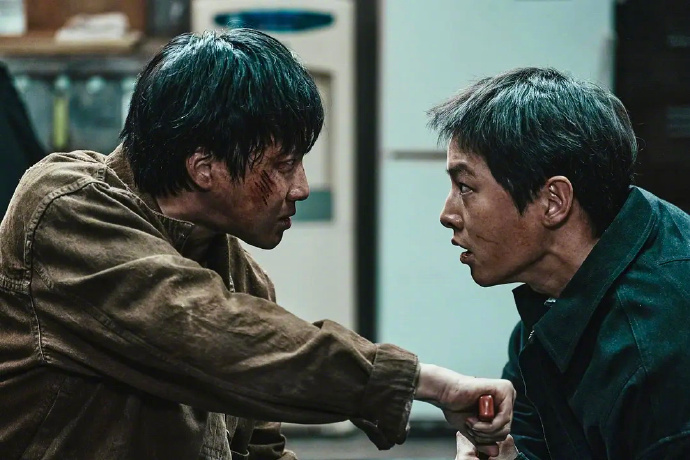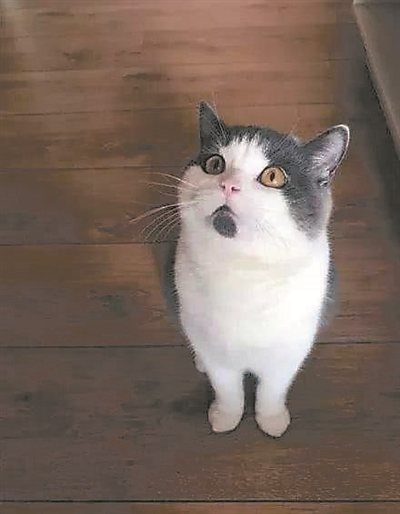The gangster theme "Disaster" exposed the international poster starring Song Joong Ki 0.

1905 movie network news Starring in the gangster movie "Disaster", an international poster was released, directed by Jin Changxun, and new actors Hong Sibin and Jin Xingxi participated. The film was shortlisted for the "One Concern" unit of the 76th Cannes International Film Festival.

The film is known as "film noir of two dangerous men struggling to get rid of the reality with no future", which is the first time that Song Joong Ki has challenged the film noir genre. It is reported that the film "Trouble" is a work selected by Song Joong Ki and co-produced by a Song Joong Ki brokerage company, which belongs to a low-budget film with a small production scale. Surprisingly, as the starring role of the film, Song Joong Ki did not receive any remuneration, but starred at 0. This has also greatly increased everyone’s curiosity about movies.

The film tells the story that in order to get rid of the hellish reality, Yan Gui meets Qi Jian, the middle boss of the organization, and enters a dangerous world together. Song Joong Ki plays the role of the middle of the organization that believes in and leads "Yangui"bossFor him, the role of "Qi Jian" is a brand-new breakthrough different from his previous roles. Hong Sibin plays the 18-year-old boy "Yan Gui". In order to get rid of the tragic and dark reality, he devoted himself to the rough world.

Song Joong Ki said before: "Can participate in"disaster and turmoilI am very happy, this work is also a new challenge for myself, and I am deeply touched. "
The first commercial cloned cat full moon in China can provide reference for cloning pandas.

Benmao

Cloned cat
On the 19th of this month, the first commercial cloned cat in China was officially announced. This cloned cat named "Garlic" was born on July 21st this year. "Garlic" is also the first cloned cat in China.
It is understood that Huang Yu, the owner of the cloned cat "Garlic", chose cloning technology to restart a new life in order to commemorate the dead pet cat. This cloned cat was born on July 21st through natural delivery of surrogate cats.
Is the cloned cat "Garlic" the same as the deceased pet cat? Why is the coat color changed? Weekly reporter interviewed experts from Jiangsu Key Laboratory of Xenotransplantation to reveal the story behind cloning.
Cloning: the asexual reproduction of an organism
In 1963, Haldane, a population geneticist, first put forward the term "cloning" in a speech entitled "Biological Possibility of Human Race in the Next 20,000 Years".
In 1997, the news that a sheep named Dolly was born through cloning technology immediately attracted the attention of all over the world. Since then, cloning has become a hot topic for everyone.
Clone is a transliteration of the English word clone. Its original meaning refers to the cultivation of plants by asexual propagation or vegetative propagation of seedlings and shoots. With the passage of time, the connotation of cloning has expanded, which generally refers to the asexual reproduction of organisms through somatic cells and the population composed of offspring individuals with the same genotype formed by asexual reproduction; Usually, individuals or populations with exactly the same genes as the original individuals are produced by asexual reproduction using biotechnology.
In fact, cloning is no stranger to us. We often use this biological method of asexual reproduction in our daily life. For example, whenever spring blossoms, people who like to plant flowers and grass will do experiments in plant cutting. From a plant, cutting branches and cutting will get many plants with the same genetic material, which is cloning. Asexual reproduction is more common in lower organisms. The division and reproduction of bacteria and planarian is that the parent splits vertically or horizontally into two daughters, and then leaves the parent and becomes an independent individual, which also belongs to cloning.
However, does asexual reproduction exist in higher organisms? Scientists once thought that it was impossible to reproduce asexually from a mature somatic cell into a complete animal. Although a somatic cell contains a complete genetic information of an animal, somatic cells have been specialized. Generally speaking, liver cells can only produce liver tissue, and breast cells can only produce breast tissue … … The birth of Dolly sheep completely changed people’s understanding, and it pioneered the cloning of higher animals.
"First, the nucleus of a donor cell containing genetic material is transplanted into an egg cell with its nucleus removed, and then the two cells are integrated by micro-current stimulation, and then this new cell is promoted to divide and reproduce and develop into an embryo. When the embryo develops to a certain extent, it is implanted into the uterus of a surrogate animal to make the animal pregnant, and an animal with the same gene as the donor can be born." Li Rongfeng, a researcher at Jiangsu Provincial Key Laboratory of Xenotransplantation, introduced the cloning process of higher organisms.
She said that cloning technology does not need male-female mating, and does not need the combination of sperm and eggs. It only needs to extract a single cell from an animal, cultivate it into an embryo by artificial methods, and then implant the embryo into a female animal to breed a new individual. This cloned animal cultured with single cells has exactly the same characteristics as the single cell donor and is a "replica" of the single cell donor. Scientists in England and Oregon in the United States have successively cultivated Dolly, a cloned sheep, and Dolly, a cloned monkey. Scientists in China have gradually cultivated cloned cattle, cloned rabbits, cloned pigs and the latest cloned cats.
Wonderful cloning technology has shown broad application prospects, such as cultivating excellent livestock and producing experimental animals, producing transgenic animals, producing human embryonic stem cells for cell and tissue replacement therapy, replicating endangered animal species, preserving and spreading animal species resources, and maintaining ecological balance.
Four surrogate mothers gave birth to a cloned cat.
On January 9 this year, Huang Yu, the owner of the deceased pet cat, formally proposed to Beijing Xinuogu Biotechnology Co., Ltd. to clone "garlic" because he missed it too much.
After exploring the pre-experiments such as in vitro maturation culture conditions and parthenogenetic activation conditions of oocytes, the research and development experiment of cloned cats was officially started in August 2018, with a total of 152 experiments. Up to now, one surrogate cat has been successfully delivered, and one surrogate cat has been tested for pregnancy and delivery. In the "Garlic" project, a total of 4 surrogate cats were embryo-transferred. Among them, the surrogate cat CNTR258 was born naturally on July 21st, 2019, 66 days after embryo transfer, and the cloned cat Garlic was successfully produced. Garlic is a very cute British short-haired cat.
"Like the general principle of cloned sheep and cloned pigs, we knock out and enucleate the genes of surrogate cats after obtaining the oocytes of surrogate cats, and then implant the cells of cloned cats to form a fused cloned embryo for activation." Wang yining, deputy general manager of Beijing xinuogu biotechnology co., ltd, introduced the birth process of cloned cat "garlic".
"Judging from the current level of cloning technology, from the pregnancy of four surrogate cats, a cloned cat was successfully produced, and the success rate was high." Chen Dayuan, a researcher at the Institute of Zoology, Chinese Academy of Sciences, believes. Li Rongfeng also said that as a new cloned species, the pregnancy rate of 25% is very high. Take the cloned pigs of Jiangsu Provincial Key Laboratory of Heterogeneity Transplantation as an example. At present, one to three transgenic cloned pigs can be obtained after transplanting 100 embryos, and the cloning efficiency is about 3%.
Shi Zhensheng, a professor at the College of Animal Medicine of China Agricultural University, said: "The reproductive physiological characteristics of cats are different from those of most animals, because cats are not spontaneous ovulation animals, but one of the few ovulation-inducing animals. Their reproductive cycle is special, and cloning technology is difficult and complicated to operate. This successful breeding of cloned cats is one of the few successful cases in the world, marking a big step for China in the field of cloning. "
"For the public, spending 250,000 yuan to clone a cat may not be understandable. But I was very happy when I knew that the cloning price was 250,000 yuan. " Huang Yu, the owner of "Garlic", said that he had searched online, and there was a cloning company in South Korea that cloned cats and dogs at a price of 400,000 to 500,000, which was unacceptable. The domestic cloned cat price of 250,000 yuan is acceptable.
It can provide reference for cloning pandas.
On August 21st, the cloned cat "Garlic" was full moon. From the photos of garlic published on the Internet, we can find that there is a slight difference between the cloned garlic and the original garlic: there is a small black piece on the chin of the original garlic, but the cloned cat is gone; There are patterns on the left leg of the body, and the pattern of cloned cats grows on the right leg.
"There are epigenetic problems in the process of animal cloning. The so-called epigenetic problem is that environmental factors will lead to different gene expressions in organisms, but the genes themselves will not change." Li Rongfeng explained that the genes in the cloned cat’s gene nucleus are the same as the original genes from the cat’s cells, but there will be differences in gene expression during the reprogramming of somatic cells. The genes are inherited from the previous cats, but some genes are not expressed or over-expressed; In the cloned cat "garlic", there is a phenomenon that the coat color related genes are not expressed correctly.
Beijing Xinuogu Biotechnology Co., Ltd. also responded: "Cloning ensures that more than 99.9% genes are the same, but the hair gene expression is random. There are patterns on the body, and there is no guarantee of 100% consistency. " At the same time, Beijing Xinuogu Biotechnology Co., Ltd. also pointed out that cloned cats can not guarantee the same living conditions and feeding environment as ontologies, and their personalities may change.
So what changes may occur in personality? Li Rongfeng said that there are many acquired factors in the formation of cloned cats’ personalities, just as human twins will have different personalities in different environments; But there are some basic personality-determining genes. If they exist in the nucleus, their personality will not change greatly even if the environment is different.
What is the significance of the birth of the cloned cat "Garlic"? Li Rongfeng said that from the economic point of view, it is not as important as meat animals, but it caters to the emotional needs of some people, such as pet owners; It is also of great significance to be able to play a companion role.
"There is also a great significance in cloning cats, which are closer to giant pandas than pigs and dogs." Li Rongfeng said that the giant panda is a rare and endangered species and it is difficult to clone. The success of cloning cats can provide reference for the cloning of rare and endangered species such as giant pandas.
Reporter Zhang Xuan